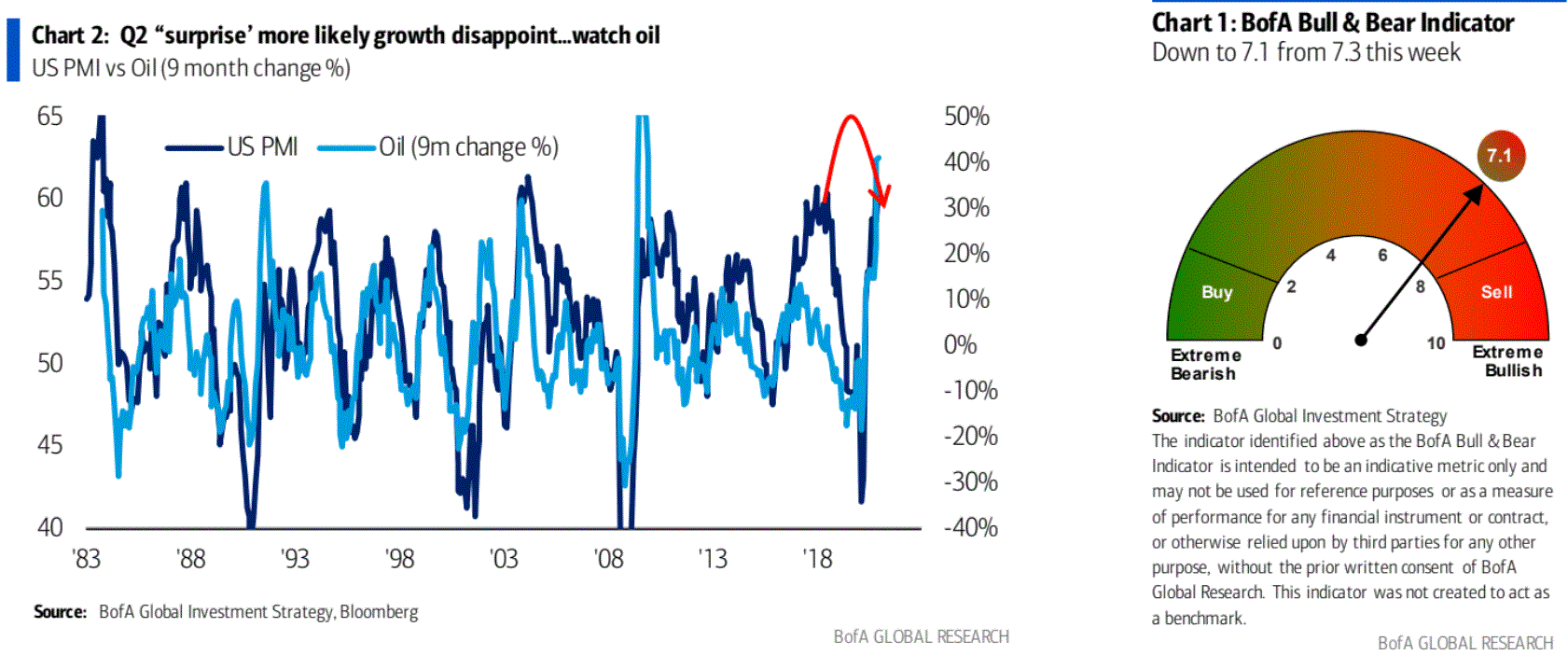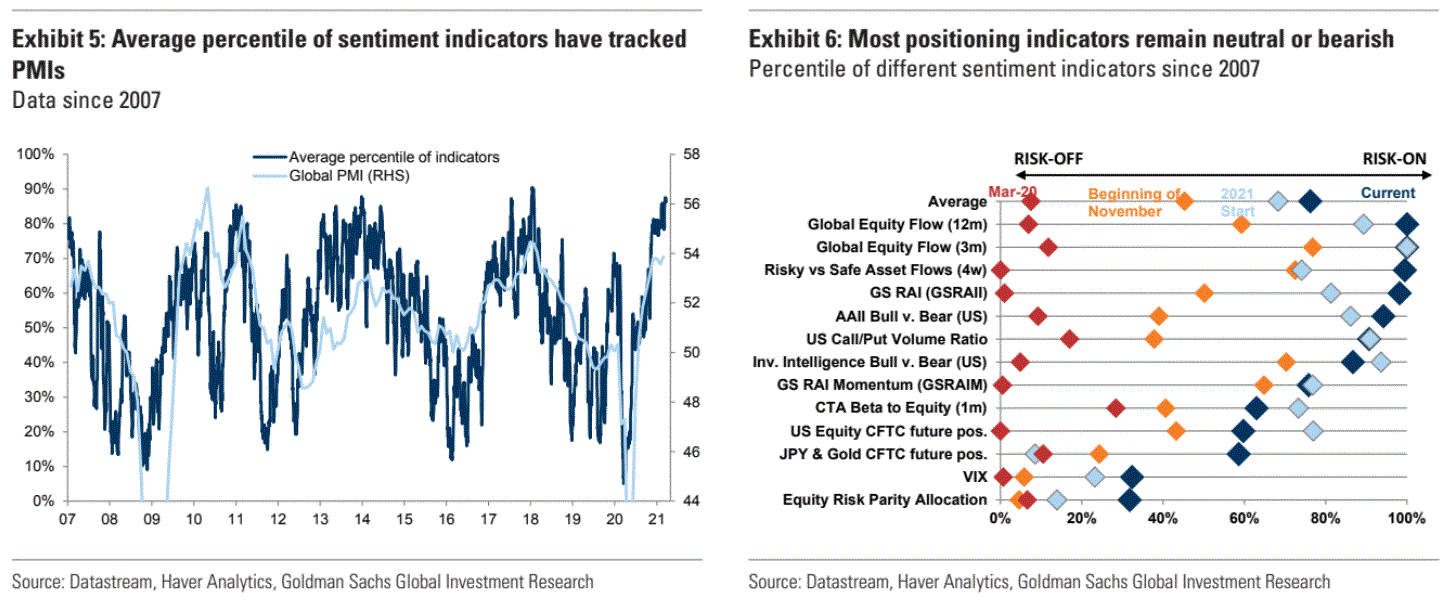The three great market narratives noted last week are still locked in a battle of wills. Good news is bad news is summarised by BofA:
Weekly Flows:$45.6bn into cash (largest since Apr’20), $10.0bn into bonds, $4.1bn into equities (smallest since Dec’20), $0.6bn out of gold.
Flows to Know: 3rd largest inflow to TIPs ever, 1st tech outflow (Chart3) since Sept’20, largest financials outflow since Sept’20.
BofA Bull & Bear Indicator: down to 7.1 from 7.3 (Chart 1), but remains elevated.
Froth: China tech (KWEB-28%, CQQQ-27%, CNT-23%),US long-duration (TAN-33%, ARKK-30%, XBI-24%), speculation (SPACs-22%) hit hard since Feb highs on rising bond yields; we say start of secular underperformance (Chart5), but traders looking for bounce note lead indicator LQD stabilized…price action sloppy but not yet sinister.
Cautious: 3P’s of peak Positioning, Profits, Policy in H1 & 3R’s of rising Rates, Regulation, Redistributionin H2mean we are cautious on asset returnsin2021; SPX 3400 more likely than 4400 in the next 6 months; new highs in Q2 would require lower-than-expected inflation given booming growth now super-consensus (and bigger Q2 risk…“oil never lies”).
Bad news is good news summed up by Goldman Sachs which gives ground but still sees S&P at 4300 this year then higher again over the following to years:
- We remain pro-risk (OW equities, N credit, UW bonds) and continue to prefer procyclical areas across and within assets. Reflation optimism has picked up materially YTD, supported by US fiscal stimulus and a rally in commodities. Our economists remain above consensus on global growth, and we think procyclical assets do not yet fully reflect the strong recovery we expect.
- Our Risk Appetite Indicator (RAI) is at elevated levels – the asymmetry for adding risk is worse and there is more vulnerability to shocks. Equity inflows YTD are at all-time highs, and positioning and sentiment broadly have picked up. A continued pick-up in growth momentum into Q2 should support risk appetite at high levels but it will likely remain a speed limit for returns. From elevated RAI levels both right- and left-tail risks are limited and there is more negative skew in returns, pointing to higher risk of corrections.
- The drivers of risk appetite have changed YTD – growth optimism has surged, while rising bond yields have led to an easing of the search for yield. This is likely to continue, with strong growth momentum in Q2, but a transition to a ‘Goldilocks’ scenario (with growth still robust but the bond sell-off easing) is most consistent with our forecasts, and this should eventually create opportunities to add exposure in long-duration assets and carry strategies. But risks around our base case have increased, e.g., growth might disappoint due to longer lockdowns, such as those in Europe.
- The risk of a deeper bond sell-off and larger inflation pick-up has been a key investor concern. While equities have broadly digested rising bond yields well so far, equity risk premia have already declined significantly. A deeper and longer bond bear market due to inflation fears could drive at least temporary indigestion for equities.
- Cross-asset volatility has reset lower with skew normalising from elevated levels. After the recent reset in equity volatility, we see opportunities to hedge the risk of growth stocks and corrections. While shorter-dated rates volatility has picked up materially, longer-dated remains low and investors can hedge risk of rate shocks in FX, Gold and oil.
This a bearish shift wrapped in a bullish coat towards the third of the narratives as represented in me. Good news is good news!
- Rates to keep heading higher and Fed to let them do so supported by massive fiscal tailwind.
- Tech stocks to bust, value rotation to continue and support the wider market.
- But, crucially, DXY to grind higher hitting gold and commodities on US growth exepctionalism, exacerbated as China tightens, with the exception of oil (for the time being).



